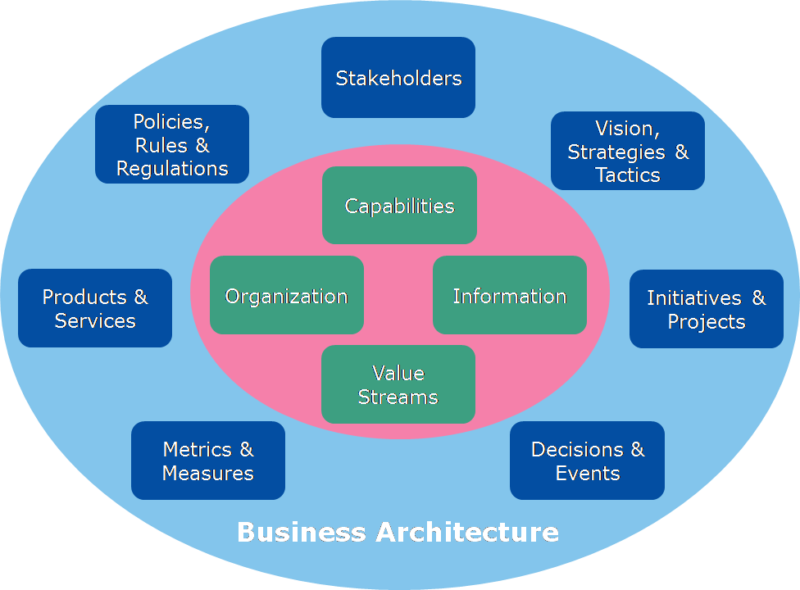In recent years, we see the audience and attention for business architecture steadily increase. A business architecture provides a business-oriented abstraction of the enterprise in its ecosystem, which helps the organization in decision-making and direction-setting. This maturation of the business architecture discipline makes the role of model-based support for design, analysis and decision-making also increasingly important. In this series of posts we will introduce you to useful techniques for business architecture modeling and how they are supported by Enterprise Studio.
Views on business architecture
The business architecture discipline has developed its own methods and body of knowledge, exemplified by “A Guide to the Business Architecture Body of Knowledge®” (BIZBOK ® Guide) from the Business Architecture Guild ® and the Open Business Architecture (O-BA) standard that is currently being developed by The Open Group.
We consider business architecture to be an important domain within the broader scope of enterprise architecture. This is also witnessed by the inclusion of business architecture concepts such as capability, outcome and course of action in the latest version 3.0 of the ArchiMate language for enterprise architecture modeling. Others take a more IT-oriented view of enterprise architecture, considering it to be enterprise-wide IT architecture, and position business architecture next to it as a separate discipline. A third group sees business and enterprise architecture as largely synonymous.
But no matter what your position is in this debate, the techniques used in the domain are an important addition to the toolbox you can use in designing and managing your enterprise. This implementation- and technology-independent view provides a crucial connection between strategy and realization: It links the often rather high-level, coarse-grained descriptions of an organization’s strategy and business model with more detail- and technology-oriented other domains within the EA scope, such as business process, application, and infrastructure architectures.
Business architecture domains
Typical domains or aspects that business architecture concerns itself with are shown in the figure below. The center comprises a set of four ‘core’ domains that represent relatively stable aspects of the business, and a number of other, more volatile aspects. Basically, all of these can be represented directly or indirectly in Enterprise Studio.
This figure does not show that all these domains are interrelated in various ways. The BIZBOK ® Guide relates them via Blueprints that represent those aspects of an enterprise (‘cross-mappings’). We prefer direct relationships between each instance of an aspect, using formal semantics. This is where ArchiMate can help out. To do this properly, a mapping metamodel is needed between BIZBOK ® concepts and ArchiMate concepts. Later on in this blog series, we will talk about creating such a metamodel.

Figure 1. Aspects of the business as represented by business architecture (adapted from the BIZBOK ® Guide).
Business Architecture and other domains
Key input for business architecture is the organization’s strategy and business model. Analysis and decision making in business architecture are supported by, for example, portfolio management, risk analysis and capability-based planning.
Other commonly used design techniques in business architecture include, amongst others, describing its value network and value streams, developing and improving customer journeys, and creating service blueprints.
9 useful business architecture techniques
The BIZBOK® describes a set of common and useful business architecture modeling techniques. In previous blogs, we have already shown how you can create several of these in Enterprise Studio. For others, we will provide examples in future blogs in this series:
Business Strategy Mapping: see previous blogs on the Business Model Canvas and strategy modeling
Capability Mapping: see previous blogs on capability mapping, analysis and realization .
Organization Mapping
Information Mapping
Initiative Mapping
Product Mapping
Stakeholder Mapping
Policy Mapping.
If you can’t wait to learn more about BIZBOK ® and its practical use, you can always sign up for our Business Architecture in Practice course and become a Certified Business Architect®!
Stay tuned!